
You may be familiar with extenders and matrices that transmit HDMI over Ethernet cables, but do you know that video over IP technology is now taking over complex application scenarios?
What is HDMI over IP?
HDMI over IP, or AV over IP, is a transmission technology that processes a compressed/uncompressed signal and transfers it over a network. With HDMI over IP, you can integrate and manage multiple network devices without distance limits.
As HDMI over IP is extensively applied to professional audio-visual projects, we will explain this technology and compare HDMI over IP with traditional HDMI matrix, switching, and extension systems in this article. You may consider employing an over-IP system in your next integration project.

What’s the Difference Between HDMI over IP and Traditional AV Systems?
First, we need to clarify the differences between traditional HDMI matrix switching and the HDMI over IP system. Though they appear to be similar at first glance, they are distinct from each other in several ways. We can compare HDMI over IP and traditional AV systems from two aspects:
- System Infrastructure
- Functionality of Devices
System Infrastructure
Here we draw a comparison between HDMI over IP and HDMI matrix switching systems. Both aim to achieve the goal of distribution and switching between AV sources and displays but with different infrastructure layouts.
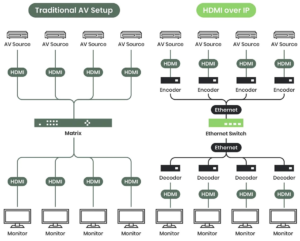
Traditional HDMI Matrix Switching System
Traditional matrix system consists of the following elements:
- Sources
AV sources from NVRs, Blu-ray DVD players, PC, or HDMI cameras.
- Transmitters
Processes the signal and sends it to the remote end.
- Receivers
Receives the signal from the local end and sends it to a display.
- Displays
Devices like TVs, LCD monitors, and projectors.
HDMI over IP System
HDMI over IP system, on the other hand, comprises source devices and displays but with different transmission kits:
- Sources
- Encoders
Converts an AV source into chunks of digital data called packets and sends them through a network.
- Decoders
Converts packets back to an AV signal and sends them to the destination.
- Ethernet Switches / Network Switches
An Ethernet switch is used in the IP system to organize Ethernet devices and uses packet switching to send packets from one/ multiple sources to different destinations.
- Displays
Functionality
In the traditional AV system, each device is designated for a specific function, such as an extender for signal extension or a switcher for signal switching. In constrast, an HDMI over IP system has only encoders and decoders, which means the same devices perform all the extension, distribution, and switching in one system.
HDMI over IP Extension

Every endpoint between an encoder, a decoder, and an Ethernet switch can be 100 meters (300 feet) apart.
HDMI over IP Distribution
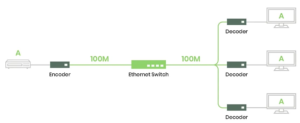
Use an encoder, an Ethernet switch, and multiple decoders to distribute an HDMI signal.
HDMI over IP Switching
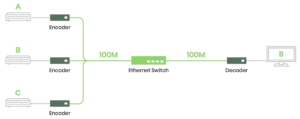
Use multiple encoders, an Ethernet switch, and a decoder to switch multiple HDMI signals.
HDMI over IP Matrix Switching

Use multiple encoders and decoders through an Ethernet switch to route various HDMI signals.
4 Reasons to Use HDMI over IP
We summarize the benefits of HDMI over IP that distinguish it from traditional AV systems. Let’s explore the powerful and flexible HDMI over IP that changes the game!
1. Greater Distance
HDMI cables have a limited length of up to 20 meters, which is often insufficient for many projects. By converting HDMI signals to IP, you can leverage the standardized Ethernet protocol, which allows you to transmit HDMI over Ethernet cables for up to 100 meters. You can also extend the transmission distance by using a daisy chain topology with multiple Ethernet switches or by using fiber optic cables, which can reach up to 10 kilometers.
2. Highly Scalable
Scalability is a key advantage of an AV over IP system. Unlike traditional AV systems that require specific devices for each environment, AV over IP systems can easily adapt to changing requirements. For example, suppose you have a 4×4 HDMI matrix installed, but you need to add another monitor and video source to the system. With a traditional AV system, you would have to replace the expensive matrix with a larger one. With an AV over IP system, you would only need to add an extra encoder and decoder to the network, and you can configure the system as you wish.
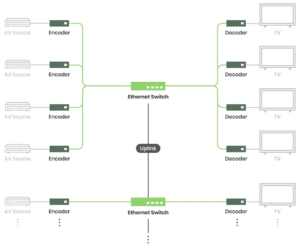
3. Cost-Effective
Nowadays, many companies already have Ethernet-based network infrastructures. You can easily integrate Ethernet devices into your current network without building a new one from scratch. The high scalability of AV over IP also allows you to avoid costly re-cabling and device upgrades.
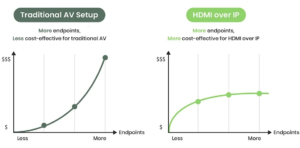
4. Flexible Controls
Ethernet offers great flexibility for controlling your AV devices. You can use a keyboard, mouse, PC software, and mobile apps to manage your AV system. This feature enables you to easily control a large-scale AV system, without getting overwhelmed by the numerous inputs and outputs.
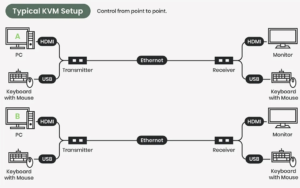
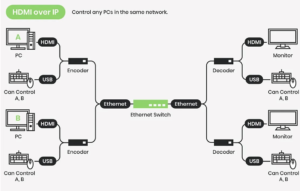
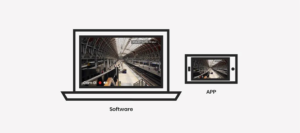
HDMI over IP Applications
HDMI over IP is a versatile solution for various scenarios. You can find applications in sports bars, department stores, churches, and control centers. All these scenarios require frequent video source switching and streaming on multiple displays. In this case, building a system with HDMI over IP transmitters and receivers can be more effective than using individual extenders, matrixes, and other dedicated devices.

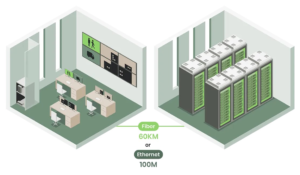
QNEX AV over IP Products

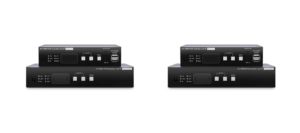
QNEX HKM02BP-4K & QNEX HKM02B-4K
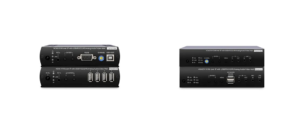
QNEX HKM02B & QNEX VDKM02B
Summary
Ethernet or IP technology offers significant potential for industries like professional audio and video (AV), enabling the integration of multiple AV devices, scalability, and centralized control. Building AV systems over IP allows for seamless integration and scalability, simplifying system design and management. However, challenges such as cybersecurity risks and initial setup costs should be considered to ensure project success. Implementing robust cybersecurity measures and accounting for setup costs are essential to harness the benefits of IP-based AV systems effectively.

1 thought on “What does HDMI® over IP entail? Four compelling reasons for its utilization.”